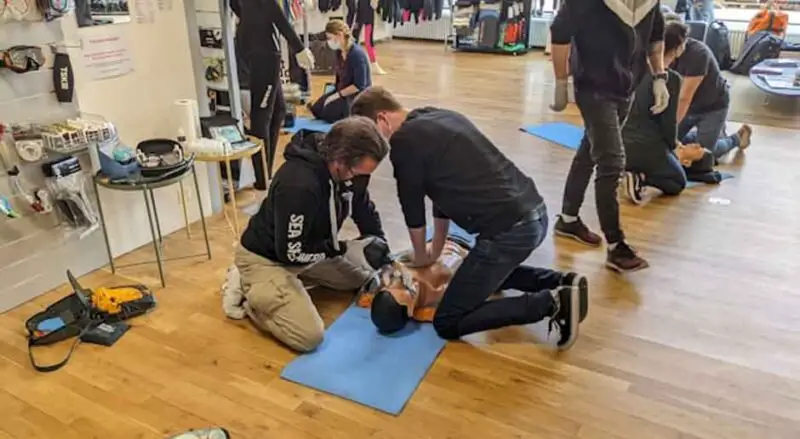
Having a CPR certification gives people the skills necessary to intervene and save lives in cardiac emergencies, making it a vital component of emergency preparation. In today’s environment, where unanticipated events can happen at any time, being certified in CPR has grown more and more crucial. For those looking for convenient training options, an Online CPR Program can be an excellent choice, allowing individuals to gain certification at their own pace. This post will explain how to become certified in CPR, emphasizing its value and going over important points, training options, and the need for routine recertification.
Determine the Type of Certification
People should think about their requirements and objectives when choosing the sort of CPR certification. The basic CPR certification is appropriate for members of the general public and includes the fundamental CPR skills for lay people. The advanced techniques included in the CPR certification program for healthcare providers are specifically targeted to their professions. Specialized CPR certifications, like those for lifeguards or pediatric CPR, are also available to address certain demographics and situations. A person’s intended use of CPR skills, personal interests, and professional obligations all play a role in selecting the appropriate certification. Choosing the right certification guarantees that people receive training customized to their particular roles and responsibilities, improving their capacity to act appropriately in emergencies.
Choose an Accredited Class
Selecting a recognized course is essential for earning a CPR certification. Recognized organizations such as the American Heart Association and the American Red Cross have set standards and norms for their training, and accredited seminars guarantee that they are met. Comprehensive instruction in CPR techniques, including rescue breathing, chest compressions, and using an AED (Automated External Defibrillator) properly, is offered by accredited programs. Furthermore, authorized programs frequently provide accreditation that many establishments and companies accept. People should make sure that they receive top-notch instruction that gives them the confidence and abilities they need to react appropriately in emergency circumstances.
Learn How to Use an AED
AED (Automated External Defibrillator) training is a prerequisite for CPR certification. AEDs are portable devices that, in the event of sudden cardiac arrest, shock the heart with electricity. Typically, CPR certification programs include instruction on how to use an AED safely. In addition to learning how to correctly place the pads on the chest and follow the device’s instructions for shock administration, participants also learn when an AED is necessary. An individual experiencing cardiac arrest has a far better chance of surviving if they know how to use an AED.
Consider Online Certification
Online CPR certification also provides flexibility and convenience. Online courses are perfect for people with hectic schedules or limited access to in-person classes since they allow you to learn at your speed and on your own time. Accredited online CPR certification courses covering basic CPR techniques and recommendations, including a BLS certification, are available from numerous respectable organizations. However, it’s crucial to confirm that the online course satisfies certification standards and is accredited. In order to prove competency, certain certification programs could additionally demand that participants show up for in-person skills evaluations. Online certification offers people a practical way to become certified in CPR and arm themselves with life-saving abilities.
Importance of Being CPR Certified
In an emergency, the value of having a CPR certification cannot be emphasized. Those who have earned their CPR certification are better prepared to act quickly and efficiently in the event of a cardiac emergency. When someone is having cardiac arrest, the odds of survival can be greatly increased by performing immediate CPR. Certified persons can sustain oxygen and blood flow to crucial organs until expert help arrives by effectively performing CPR. Having a CPR certification also boosts one’s self-assurance and preparedness to intervene when necessary. Furthermore, CPR certification is crucial in a variety of professional situations as it is frequently needed for employment such as childcare providers and healthcare professionals.
Conclusion
To sum up, having a CPR certification is a sign of empowerment and readiness in an emergency. People can improve their ability to respond to cardiac emergencies by becoming more proactive, realizing the value of routine recertification, and earning their CPR certification. For those looking to arm themselves with life-saving abilities, the path to becoming CPR-certified offers flexibility and convenience, from selecting recognized classes to taking into account online certification programs.

